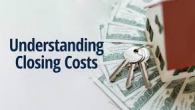Mastering the Mortgage Maze: A Comprehensive Guide to Interest Rate Buydowns in Real Estate
Buying a home is a pivotal moment, but navigating the intricate financial aspects can feel overwhelming. When interest rates climb, scaling the “affordability mountain” becomes even more challenging. Thankfully, there’s a hidden path known as an interest rate buydown, offering a potential solution to reach your goal.
This article delves deeper than a basic explanation, diving into the intricacies of buydowns, exploring their potential benefits and drawbacks, and guiding you through the key considerations to make informed decisions.
Deciphering the Buydown: Different Paths to Lower Rates
Think of an interest rate buydown as reducing your mortgage interest rate, either for the entire loan term or for a specific initial period. This translates to lower monthly payments, easing the financial burden, especially in high-interest environments. But how does this magic happen? Buydowns offer two primary routes:
1. Discount Points: Imagine buying “shortcuts” on the interest rate mountain. Each “point” (typically costing 1% of your loan amount) reduces your final interest rate by a specific amount (usually 0.25%). The more points you purchase upfront, the lower your permanent interest rate throughout the loan. For example, on a $200,000 loan, 2 points cost $4,000 but potentially lower your rate by 0.5%, yielding significant savings over a long loan term.
2. Temporary Buydowns: These act like temporary bridges across the high-interest rate chasm. A pool of money subsidizes your interest payments for a pre-defined period (2-3 years), typically funded by the seller, builder, or even a government program. This allows you to enjoy lower payments initially, followed by a gradual increase to the original rate later. Popular structures include:
- 2-1 Buydown: Reduces the rate by 2% in year 1, 1% in year 2, then rises to the original rate in year 3.
- 3-2-1 Buydown: Follows a similar pattern, reducing the rate by 3%, 2%, and 1% in the first three years, respectively.
Unveiling the Benefits: Why Consider a Buydown?
While not a one-size-fits-all solution, buydowns present several potential advantages for certain buyers:
1. Affordability Boost: Lower monthly payments during high-interest periods make homeownership more attainable, especially for budget-conscious buyers. It can be the difference between qualifying for a home or being priced out of the market.
2. Competitive Edge: In a competitive market, sellers offering buydowns can attract more buyers, potentially leading to faster sales and higher offers. This can benefit both buyers and sellers seeking a quicker transaction.
3. Strategic Flexibility: Temporary buydowns offer lower payments initially, allowing you to build financial reserves, address unexpected expenses, or adjust to changing income levels. This flexibility can provide peace of mind in uncertain times.
4. Potential Interest Savings: Although discount points require upfront costs, the long-term interest savings can outweigh the investment, particularly when interest rates are expected to remain high. Analyzing the break-even point is crucial to ensure long-term benefit.
Beyond the Glitz: Examining the Drawbacks and Considerations
Before embarking on your buydown journey, remember:
1. Financial Suitability: Evaluate your long-term financial goals and ability to manage higher payments after the temporary buydown period. Ensure you can comfortably afford the increased payments later.
2. Upfront Costs: Be prepared for the initial financial outlay associated with discount points or the contribution required for a temporary buydown. Consider if this outlay aligns with your current financial situation.
3. Market Fluctuations: If interest rates drop significantly after you purchase points, the upfront cost might not be justified. Analyze market trends and consider expert advice to assess the future outlook.
4. Loan Eligibility: Not all loan types qualify for buydowns. Consult your lender to confirm compatibility with your chosen mortgage and avoid potential surprises later.
5. Tax Implications: The tax treatment of points and buydown contributions can vary. Consult a tax professional to understand the potential impact on your tax liability and make informed decisions.
Beyond the Basics: Exploring Diverse Buydown Options
The buydown landscape extends beyond standard discount points and temporary structures. Here are some additional options to explore:
- Seller-Paid Buydowns: Motivated sellers might contribute to your buydown costs, making the option more enticing. Negotiate this possibility during the offer stage.
- FHA 2-1 Buydown: This government-backed program offers specific guidelines for temporary buydowns with FHA
Additional Information
Here are some websites that can provide information on interest rate buydowns:
- Mortgage Lender Websites: Many mortgage lenders and banks have information about interest rate buydowns on their websites. They typically explain what buydowns are, how they work, and the potential benefits.
- Real Estate Websites: Sites like Zillow, Realtor.com, and Trulia often have articles and explainers about interest rate buydowns and how they can be used in home purchases.
- Mortgage Broker/Loan Officer Websites: Mortgage brokers and individual loan officers may have detailed information about buydowns on their professional websites.
- Government Agency Websites: Sites like the Consumer Financial Protection Bureau (CFPB) and the Department of Housing and Urban Development (HUD) provide educational resources on various mortgage topics, including buydowns.
- Personal Finance Websites: Sites like NerdWallet, The Balance, and Bankrate have articles that discuss interest rate buydowns as a mortgage financing strategy.
- Real Estate Blogs and Forums: You may find helpful discussions and advice about buydowns on real estate-focused blogs and forums.
The key is to look for sites that specialize in mortgages, home buying, or personal finance, as they are most likely to have detailed and up-to-date information on interest rate buydowns and how they can be utilized.









Leave a Reply